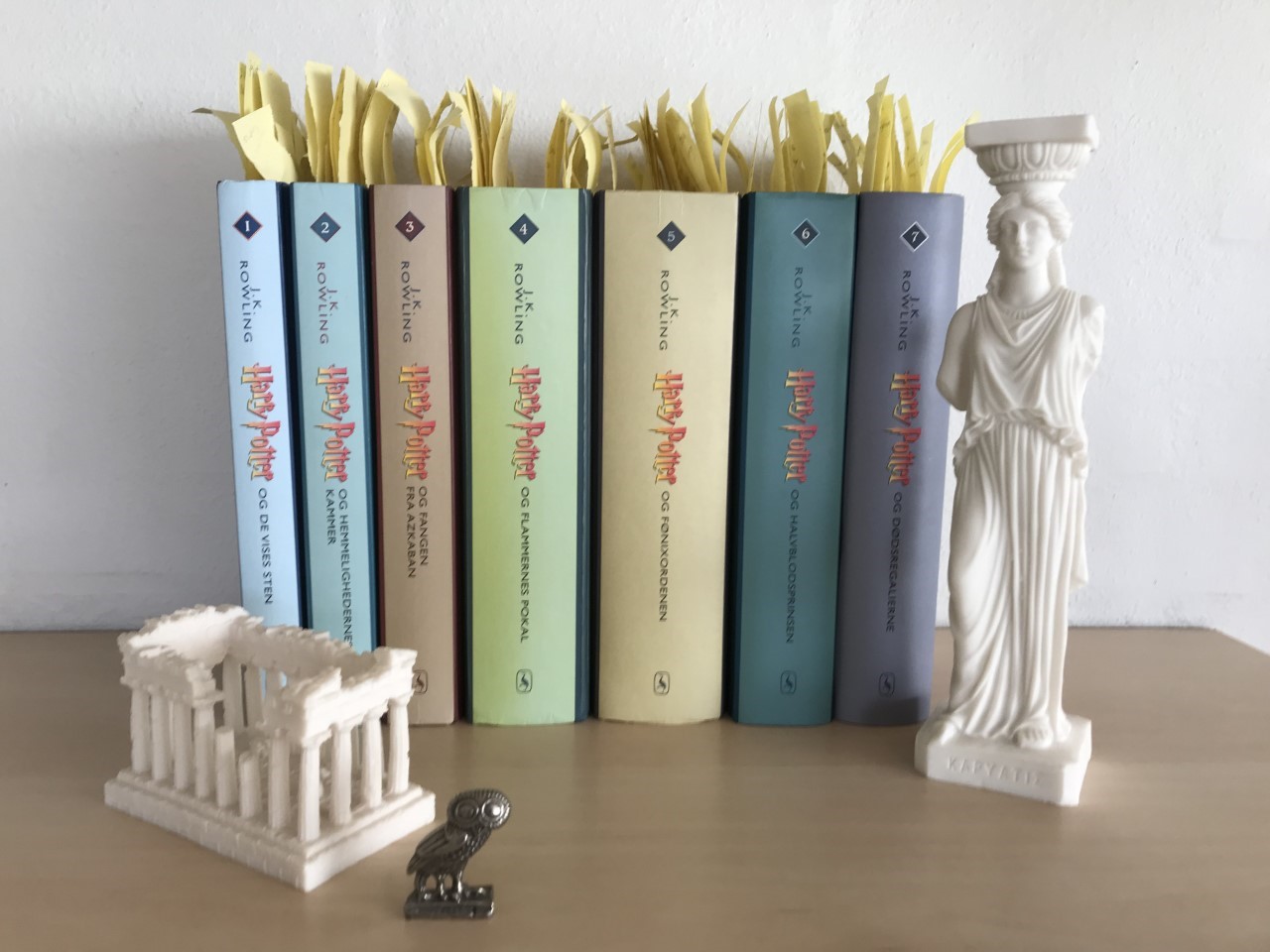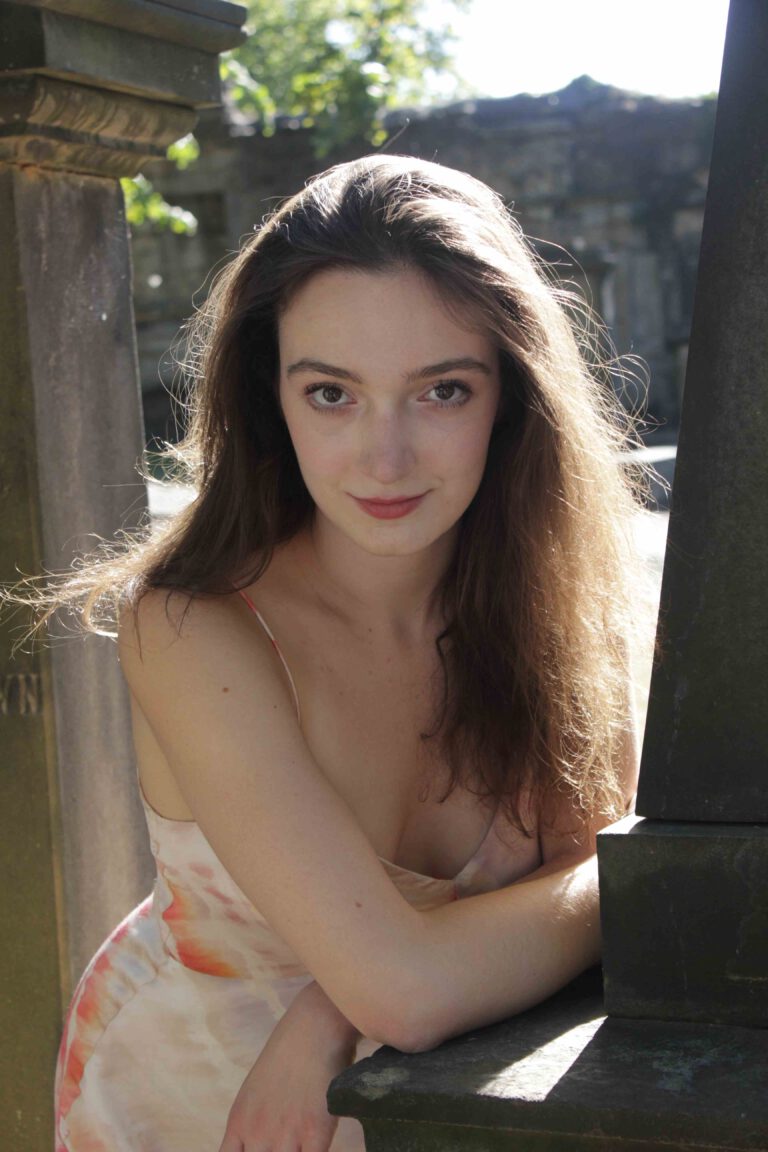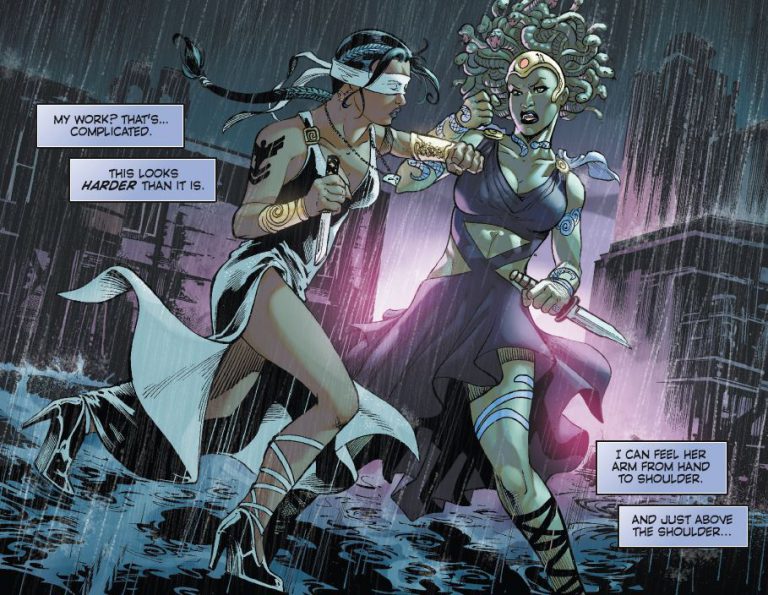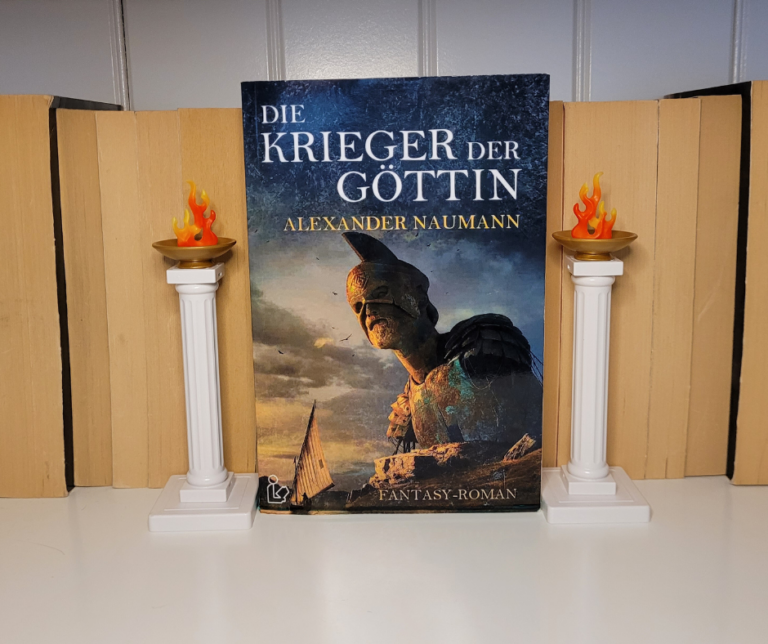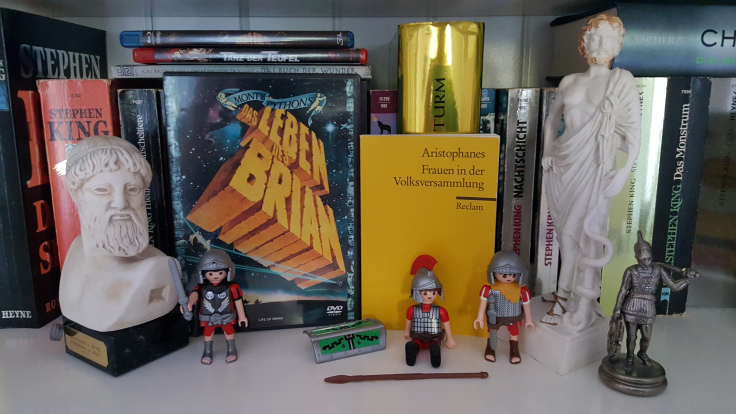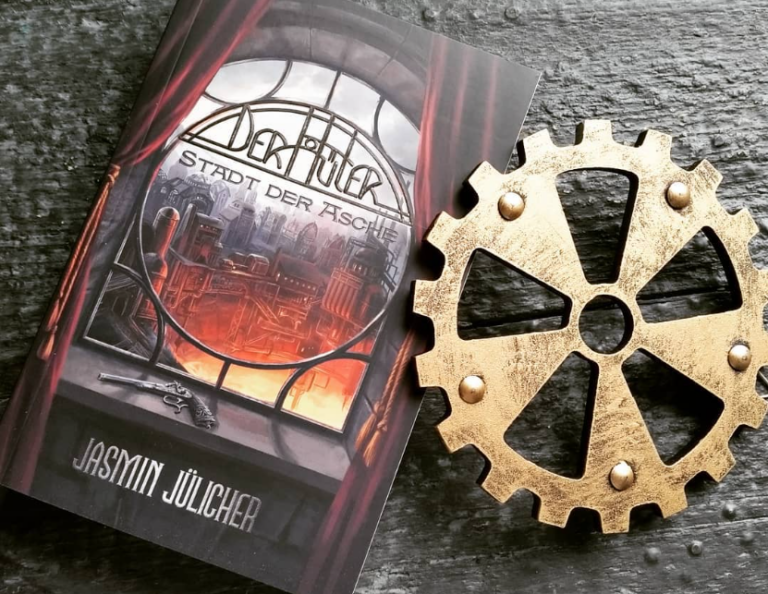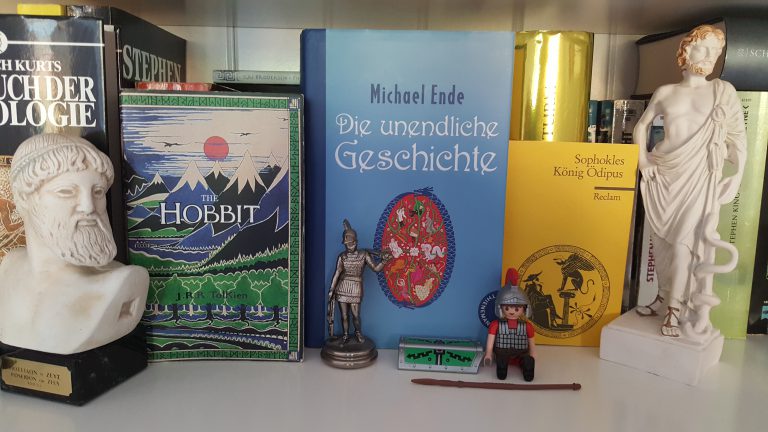Athene McGonagall and the Devine Owl – The Use of Ancient Greek Myths as Imagery in Harry Potter
Introduction[1]
During the past twenty years or so the world of Harry Potter has enraptured the minds of millions of people, young and old. The masterfully crafted magical universe sparked a world-wide interest in fantasy, magic and myths – an ongoing interest that does not seem to imply a downward trend happening in the near future. The world of Harry Potter is complex, and the parts not invented by author Joanne Rowling lends its themes, characters and narratives from a variety of sources; among these characters, myths and narratives from classical Greece and Rome.
In this article the role of the owl in Harry Potter will be examined in relation to the meaning and importance of the owl in classical antiquity. The use of the owl in Harry Potter might have met some readers of Harry Potter with wonder and surprise as the owl is a non-mythical and non-magical creature. Yet, the use and, due to this, the current examination of the owl in Harry Potter can be justified as significant as the fantasy-world of Harry Potter, on the one hand, is not all comprised of magical things or beings, and on the other hand, though not mythical the owl still connotes mystique qua its nocturnal activities.
Material and methodology
The material which lays the ground for this examination consists of all seven Harry Potter books and eight films, since the owl retains an essential role throughout the series.[2]
Firstly, the role of the owl in classical Greece and Rome will be examined in the paragraph “The owl in Greek and Roman mythology” in order to provide the reader with a starting point for the further analysis. By doing this, the reader will hopefully gain an understanding of if and how the perception of this creature has changed over time when continuing to the paragraph “The owl in Harry Potter”. Secondly, this paragraph will look at how Rowling has put the owl into use in her magical universe; does the owl of her story resemble that of the ancient Greek or Roman “templates”, or does Rowling’s idea of the owl and its abilities differ from the ancient starting point? In addition to this, no matter the answer, the next important question must be “why”? Finally, it will be addressed if and how the use of the owl in Harry Potter has had an impact on this creature in real life.
Research overview
The academic literature on Harry Potter is growing at a quick pace, but literature on the use and reception of themes or characters from classical antiquity in the Harry Potter books and films seem to be scarcer.
Yet, one researcher has dealt with themes from classical antiquity in Harry Potter on several occasions. Her name is Anna Mik and her publications like “Magizoology: the magical creatures studies J. K. Rowling’s postulates on animals in “Fantastic Beasts and Where to Find Them”, and the video “Mythical Sanctuaries of the Wizarding World: The Ancient Classical Concepts of “Animal Protection” in J. K. Rowling’s Harry Potter Universe” revolve around comparing ancient magical creatures with modern animals and animal protection in both worlds. In this way, Mik does not deal with the use of the owl in Harry Potter, as this is not deemed magical nor endangered. Still, Mik’s other comparisons between mythological creatures from classical antiquity versus those in Harry Potter are thorough and well done.
Researchers like David Colbert, Dagmar Hofmann, and John Granger have all published works on mythological creatures in Harry Potter in different ways. In The Magical Worlds of Harry Potter. A Treasury of Myths, Legends and Fascinating Facts Colbert examines much more than mythological creatures. Despite the short encyclopaedia-like entrances Colbert manages to draw parallels between myths, creatures, names, and characters of classical antiquity and those of Harry Potter. Colbert even mentions Harry’s owl Hedwig – something we will return to in the paragraph “The owl in Harry Potter”. Hofmann’s comprehensively analysed “The Phoenix, the Werewolf and the Centaur: The Reception of Mythical Beasts in the Harry Potter Novels and their Film Adaptations” does not include the owl, as the chapter is centred around the three mythological creatures in the title and their long reception history. Yet, Hofmann’s text functions as a good example of how to examine similar topics. While mentioning other mythological creatures, Granger’s How Harry Cast His Spell, predominantly focuses on the use of the Phoenix as a Christian symbol. Therefore, Grangers examination also deals with the reception history of a particular creature although not the same as the one in this article.
Other ways researchers have looked into the universe of Harry Potter include studies on the use of Latin in the books, prejudice, posthumanism, othering, and homosexuality among many other topics.[3] This clearly shows the diversity in the ways researchers have approached the series so far, and it seems that in Harry Potter researchers within various fields have found a treasure trove of information and topics supplying them with material for many years to come.
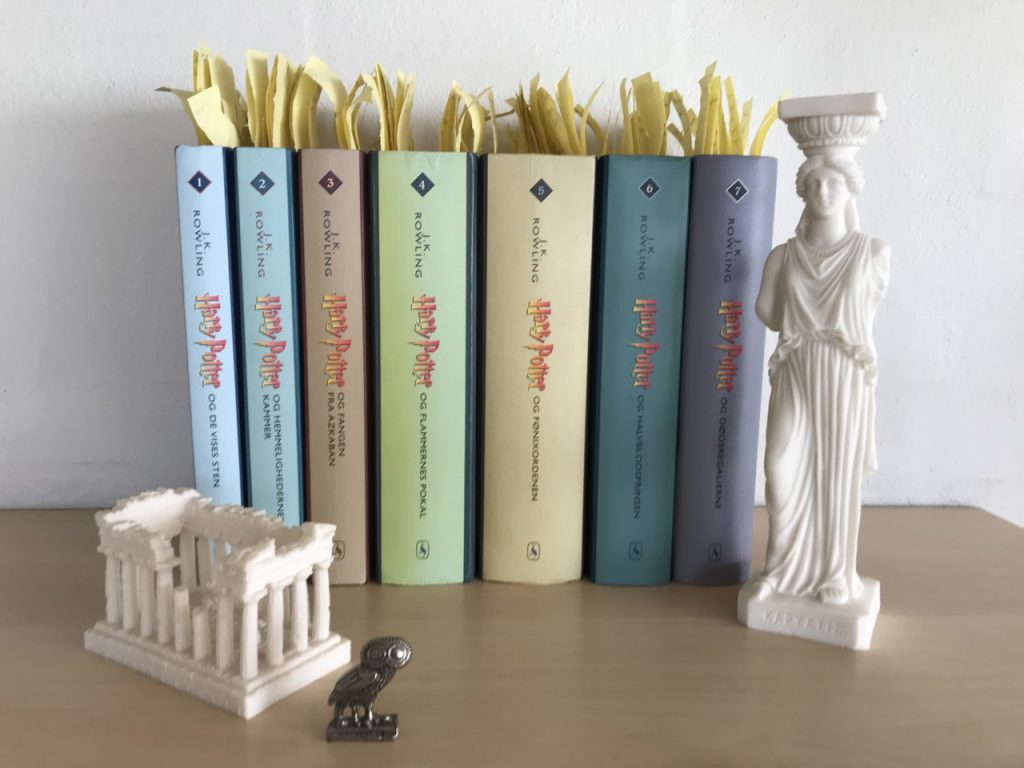
The owl in Greek and Roman mythology
In classical antiquity the owl was closely connected to the ancient Greek goddess Athene and the city of Athens. The myth goes that Athene won a competition between herself and Poseidon in who should become the city’s protector,[4] and so the connection between Athens and Athene was significant. Allegedly, Athene was born from the head of Zeus[5] – where wisdom commonly perceived resides[6] – which may be the reason why she, besides being the goddess of strategic warfare, also performed the role as the goddess of wisdom. The Romans largely equated Athene with the Roman goddess Minerva, and so both functioned as goddesses of the city, of wisdom, craftsmen and teaching.[7] In fact, Ovid mentions her as “…the goddess of a thousand works”,[8] in this way underlining her cleverness and many skills.
In the middle of the fifth century B.C. the Parthenon was built as a temple to Athene Parthenos (the virgin goddess) on the Acropolis.[9] Here the little owl, even today known as Athene noctua, may have lived and bred[10] – thereby facilitating our understanding of the connection between this particular owl and the goddess Athene. The Encyclopædia Britannica mentions that Athene was: “…associated with birds, particularly the owl, which became famous as the city’s own symbol.”[11] Actually, the owl ended up being synonymous with the city of Athens, as the four-drachma coins issued there had Athene on the one side and the owl on the other.[12]
Equally, the connection between Athene and the owl makes sense as Athene in her function as goddess of strategic warfare would outmanoeuvre her opponents, just like the owl hunts and kills small rodents by a means of silent, stealth-like flight in the dark.[13] Moreover, one of Athene’s many epithets is γλαυκῶπις (glaukopis) meaning “with gleaming eyes”.[14] The dictionary further states that γλαύξ (glauks) refers to the owl Athene noctua because of its glaring eyes[15] – in this way adding to the similarities between the two. This common feature may be explained by the owl’s ability to see in the dark, something not bestowed upon mortal human beings, and so this gift seems otherworldly. The ability may also be interpreted figuratively as being able to see or know things others cannot,[16] in this way pinpointing Athene’s scope as goddess of wisdom.
Clearly, the owl and Athene shared certain powers, and as demonstrated above, both held a prominent place in the myths, hearts, and physical life of the Athenians. But what do all of this have to do with Harry Potter?
The owl in Harry Potter
The first time the reader or viewer is introduced to the owl in the universe of Harry Potter, is when a letter to Harry lands on his aunt’s and uncle’s doorstep.[18] As Harry never receives any mail the situation is in itself remarkable. Yet, what is even more remarkable is the way the letter is delivered to Harry. The messenger is no ordinary messenger or mailman; instead, the letter is delivered “by owl”, the commonly used procedure when sharing information in the wizarding world. This means that the owl is introduced fairly quickly in the Harry Potter universe, thusly underlining its great importance. This is also accentuated by how Eeylops Owl Emporium is one of the first shops Harry encounters after entering Diagon Alley,[19] and how Hagrid insists on buying Harry an owl for his birthday because they are popular, useful, and deliver mail.[20] The owl Hedwig becomes one of Harry’s best and most loyal friends, often being his only support during the Summer months when Harry much against his will must return to the Dursley’s to spend his vacation.[21]
Joanne Rowling and Classics
Before her breakthrough as a writer Rowling studied French and Classics at Exeter University eventually earning a degree in said fields.[22] Due to this, hinting at a conscious and deliberate connection between Rowling’s background, her knowledge of the classical world, and Harry Potter does not seem like complete guesswork. This is supported by how Rowling uses names from the history and myths of classical antiquity like Agrippa, Ptolemy, and Circe to refer to famous witches and wizards.[23] She also comments on various topics and myths on the site Pottermore – even information on how the owl and the goddess Minerva are connected.[24] Additionally, the last book in the series Harry Potter and the Deathly Hallows contains the most direct reference to persons or works from the classical world, as an epitaph quoted directly from Aeschylus’ The Libation Bearers adorns the beginning of the book. Therefore, looking at how Rowling has portrayed the owl in Harry Potter compared to how it was portrayed in classical antiquity may emphasize the purposely used ancient and modern connections even further.
Owls in the Harry Potter universe
The Harry Potter universe features not one but several owls. Some are at free disposal like the owls in the owlery of Hogwarts, yet, some of the owls we encounter have names and are closely connected to their owners. For example, the owl owned by Percy Weasley is called Hermes.[25] This is a direct reference to the messenger god of ancient Greece sporting winged shoes that let him travel swiftly from place to place carrying news with him[26] – an apt name connoting the appropriate and obvious in owls being the messengers of the wizarding world. Athene and her owl are commonly shown together, but unlike its named counterparts in the Harry Potter series, Athene’s owl does not have a name. Therefore, Athene’s owl may represent the species of owls called Athene noctua as mentioned in “The owl in Greek and Roman mythology” rather than one specific owl. Still, the close connection between Athene and the owl is apparent.
Harry and Hedwig
Just so is the relationship between Harry and Hedwig. The owl Harry gets for his birthday is a rare snowy owl, and therefore a different species than the owl of Athene. He decides on calling the owl Hedwig – a name he encounters in the schoolbook A History of Magic.[27] Colbert states that Hedwig was named after: “A saint who lived in Germany in the twelfth and thirteenth centuries. An order of nuns established under her patronage chose as its work the education of orphaned children – like Harry.”[28] This highlights the loving and caring relationship between the characters – a love manifested by how Hedwig tries to protect Harry at a crucial time when he is attacked by a group of Dark Wizards in Harry Potter and the Deathly Hallows.[29] This shows the bond between the two, a bond which was established at a difficult and lonely time in Harry’s life – orphaned and mistreated living with his non-caring relatives – something that only makes Hedwig’s resulting death even more heart-breaking. Harry not only loses a friend and a helper in Hedwig, he also loses a part of himself; more specifically, the first part signalling he was a wizard. This indicates that Harry through the loss of Hedwig also loses a part of his identity. Harry moves on without her and functions without her, as Athene would sometimes function without her owl thereby attaining a different identity, but both make sense together and are recognized as a pair – the owl in both cases working as an attribute to the main character.
Following the topic of protection and Hedwig’s attempt to save Harry, Athene is often mentioned as protector, not only of the city of Athens, but also of heroes like Odysseus and Herakles.[30] Athene helps Odysseus return safely to Ithaka in The Odyssey[31] and she assists Herakles in performing his twelve labours.[32] Through her cunning, she devises a plan to let Odysseus enter his home without being recognized, and ways for Herakles to solve the many difficult tasks put before him.
Minerva McGonagall as Harry Potter’s Athene
In Harry Potter the gods are absent, but the headmistress of Gryffindor House, the house Harry is sorted to, is called Minerva – the name of the Roman equivalent of Athene. As headmistress her job is to look after the students of that house, and in some ways to protect them from harm from the other houses – mainly Slytherin House. By this her role is established as both the protector of the “city” – Gryffindor House – and the “heroes” – the children and Harry especially – within. Furthermore, she assists Harry with various tasks throughout the series, hereunder letting him search for the Horcruxes during The Battle of Hogwarts.[33] Moreover, Minerva McGonagall teaches at Hogwarts, whereby her character traits as knowledgeable and a harbinger of wisdom are underlined.
The hero and his friends and helpers
This means that both Hedwig and McGonagall serve as Harry’s helpers, guides, friends and role models, and that Harry in return performs the role of the hero. But Harry is a special kind of hero. In the beginning, he does not seek out the fame, glory or the heavy tasks laid upon him like the heroes of the ancient Greek myths would commonly do. But as the story progresses, he actively engages in fights with dangerous, mythological creatures and accepts the fate that is bestowed upon him. In the ancient myths, the gods are immortal, while the heroes of ancient Greece have generally gained immortality through their deeds and reputation – a much desired accomplishment in the ancient world.
Harry fulfils both god- and hero-like qualities throughout the seven books. He is killed (sort of) twice but returns to life. The first time he takes a killing curse unwillingly and unconsciously earning him an unprecedented reputation, fame and recognition in the wizarding world. The second time he seeks out death/the underworld willingly to rid the world of a monster – much like the heroes of ancient Greece would go about their business. This only adds to his fame, and underlines Harry’s hero- or god-like role. Harry and Hedwig clearly form a special relationship, and with Harry’s two-parted role as part god, part hero, it only seems fitting that his attribute should be an owl – a symbol of intelligence.
The owl is as a symbol of wisdom and excellence
Since Hogwarts is a school, the children there study various subjects and attend exams like children in the Muggle-world do. At the end of their fifth year the students must pass a series of exams called OWL’s – Ordinary Wizarding Level examinations,[34] meaning the owl is used as a symbol of wisdom and excellence. The wisdom of the actual owls in the Harry Potter series is also emphasized. This is seen for example by how Tom, the landlord of the Leaky Cauldron, describes Hedwig as a “very smart owl”,[35] or when Harry tells Hedwig to deliver a letter to Sirius even though the letter is addressed to “Snuffy” and she understands him.[36] Hermione even uses the owl as an expression during an incident where Harry and Ron are not speaking. They keep sending her back and forth to deliver messages until she yells: “I’m not an owl”[37] in this way indicating she is not to be given orders and sent about like the loyal owls.
The Encyclopædia Britannica further states that: Owls became symbolic of intelligence because it was thought that they presaged events. On the other hand, because of their nocturnal existence and ominous hooting sounds, owls have also been symbols associated with the occult and the otherworldly. Their secretive habits, quiet flight, and haunting calls have made them the objects of superstition and even fear in many parts of the world.”[38] In fact, an owl hoots as a warning in the myth about Myrrha in Ovid’s Metamorphoses,[39] thus supporting the statement above.
Otherworldly – but not scary
Although their abilities have been depicted as otherworldly, there is nothing scary about the owls in Harry Potter – unless we take the reaction of the Dursley’s into consideration when confronted with the many owls delivering massages to Harry throughout the narrative.[40] Instead, in the modern, magical universe of Harry Potter, the owl has largely retained the positive connotations it carries with it from its connection to Athene, Athens and the classical world. The owl remains a symbol of wisdom, loyalty, protection, and is recognized as belonging to a certain master qua its attribute-like qualities. In this way, the use of the owl works as the perfect means of conveying the fantastical in the factual – owls are a naturally occurring bird in the wild, and birds like owls, hawks, and pigeons can be trained – even to deliver messages. Thus, the use of the owl in the new context seems believable even though it has been imposed with incredible, magical properties, and this mix of the magical and the mundane might be the root to the success of the books and the characters within.
Today we are used to sending messages on various platforms, but when the first Harry Potter book was published in 1997, the options for getting in contact were more limited. Yet, the use of the Internet quickly took root in private as well as professional contexts, providing the users with unprecedented and almost otherworldly means of communicating. In using the owl as a messenger, something rather efficient in the novels yet strange in real life, the owl becomes an image of new hitherto unknown ways of communicating. It also indicates the importance of loyalty, trust, and the credibility of the messenger, as the sender on some occasions remains unseen or maybe even anonymous.
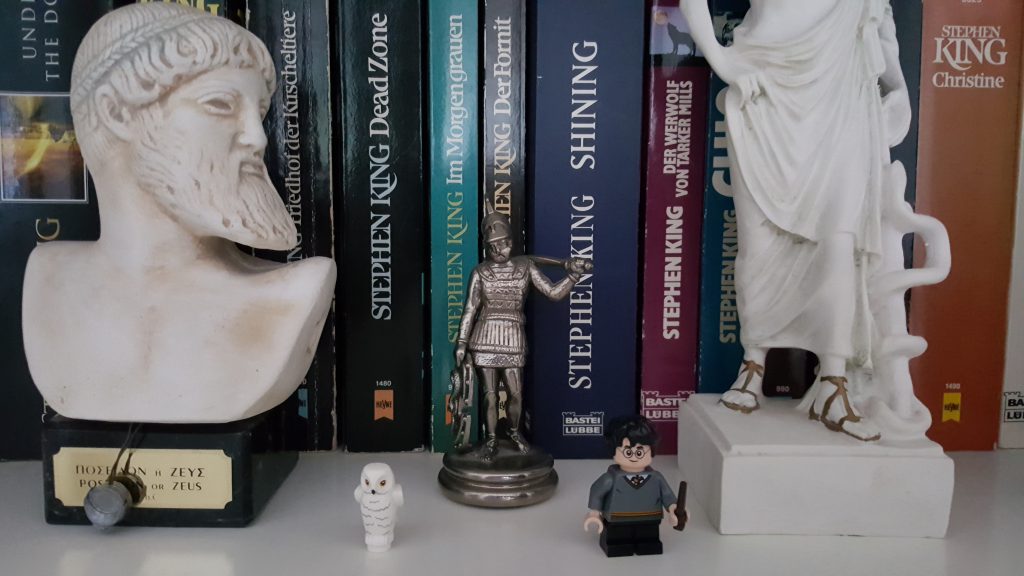
The owl today
It should not come as a surprise that books and films affect the readers and viewers – sometimes to a degree where the audience gets so invested in certain elements of the narrative that they seek to bring these elements to life. This can be seen in relation to Harry Potter where real life Quidditch clubs have emerged, new types of music have been invented, and various sights in connection to the Harry Potter universe have become surprisingly popular tourist attractions.[41]
The consequences of transferring elements from a fictional universe to the real world might also be traced to the subject of this investigation; the owl. It has been reported that there has been a boom in the illegal trade of owls in Indonesia, and that the popularity of Harry Potter may have had something to do with it. Before 2001 a few hundred owls were sold each year, but by 2016 the number had increased to 13000. The word for owl even changed from “burung hantu” in Malay to “burung Harry Potter”[42] which supports the link between the books and films and the illegal owl trade in this area. On the other hand, the rising sales could simply be a result of population growth and a general trend. In fact, a British investigation from 2017 concerning the number of owls bought as pets in the UK and the later abandonment of these owls in sanctuaries states that: “Contrary to what was widely reported in the popular press, we found no evidence that the Harry Potter films had a substantial impact on either of these aspects within the United Kingdom.”[43]
Even though the abovementioned examples differ in accordance to location and illegal versus legal trade, both tell us of the impact the Harry Potter series has had. Not only have we become aware of the possible problems in keeping wildlife as pets, scholars have also found new ways of approaching this subject specifically and Harry Potter in general. Additionally, the notion that this question is being discussed at all, perfectly underlines the growing awareness of how various elements of popular culture affect us, our habits, and our opinions.
Conclusion
Owls are featured throughout the Harry Potter-series in both written and cinematic form. This points at their importance, which is also seen by their early introduction in the narrative. The privately-owned owls in Harry Potter provide their owners with comfort like pets normally do, but they also perform unusual tasks at the orders of their masters. They deliver messages under difficult or dangerous circumstances, a task attributed to the flying Greek messenger-god Hermes in the ancient myths. In Harry Potter one owl is even named Hermes, in this way highlighting the connection between the operational areas of the two.
In classical antiquity the goddess Athene was closely connected to the little owl now called Athene noctua, and their special bond is reflected in the bond shared by Harry and Hedwig in particular. Harry’s owl is rare and therefore easily recognized, just as the owl of Athene would lead the beholder to think of Athene even if it was portrayed without her. Athene was known as a protector of heroes, and her Rowlingesque counterparts retain this characteristic. Minerva McGonagall takes on the god-like, all-knowing, and terrifying yet loving role of Athene as she frightens, inspires, and helps Harry succeed in his endeavours. Hedwig assumes the role of the wise attribute of Athene, often knowing what Harry needs without him stating it at the same time as helping him out and even rescuing him at one point. Harry’s relationship with these two characters underlines his role as part god, part hero.
The wisdom of the owl is depicted both literally and metaphorically. Literally we see how Hedwig instinctively knows who to deliver the letters to and where to find them, even though the letters may not be addressed. The metaphorical use of the owl can be seen through the exams called OWL’s at Hogwarts, a test designed to show the level the particular student has reached in the various subjects.
This means that Rowling all in all, sticks to the features, skills, and connotations connected to the owl of Athene in her portrayal of it in Harry Potter; namely a winged messenger like Hermes, loyal to a fault, connected to a certain individual, and highly intelligent. It makes sense selecting a “pet” of an ancient goddess and transferring it with all its skills to a magical universe where anything can happen – the magical world of Harry Potter easing the acceptance of the owl and its abilities in the new context. In Rowling’s description of the magical world, she had to come up with things or creatures separated from our normal empirical world to make the universe entertaining as well as credible. By using the owl the way she did, she turned something real and unmagical into something very special – not unlike the transformation Harry goes through. The owl of Athene and the owl of Harry fulfil the same role and retain the same qualities, and while remaining a real-life creature, the owl fascinates us because of its somewhat secret nocturnal life, thus earning its rightful and meaningful place in a magical, epic context like Harry Potter.
If you liked this article please read also Louise’s second article on Harry Potter and Greek mythology.
[Download the article as PDF file]
Bibliography
Books
Aeschylos. 2014. The Libation Bearers. Translated in verse by Robin Bond, University of Canterbury, Christchurch, New Zealand
Colbert, David. 2001. The Magical Worlds of Harry Potter. A Treasury of Myths, Legends and Fascinating Facts. Puffin Books, London
Firestone, Amanda, Clark, Leisa A. 2018. Harry Potter and Convergence Culture. Essays on Fandom and the Expanding Potterverse. McFarland & Company Inc. Publishers, North Carolina
Granger, John. 2008. How Harry Cast His Spell. Tyndale
Homer. 2002. Odysseen. Translated by Otto Steen Due. 2. edition, Gyldendal
Liddell, Henry George, Scott, Robert & Jones, Sir Henry Stuart. (LSJ) 1996. A Greek-English Lexicon. Clarendon Press, Oxford
Ovid. 1959. Fasti. Translated by Sir James George Frazer. Harvard University Press, London
Ovid. 2005. Metamorfoser. Translated by Otto Steen Due. 2. Edition, Gyldendal
Rowling, J.K. 1997. Harry Potter og de Vises Sten. Translated by Hanna Lützen. Gyldendal
Rowling, J.K. 1998. Harry Potter og Hemmelighedernes Kammer. Translated by Hanna Lützen. Gyldendal
Rowling, J.K. 1999. Harry Potter og Fangen fra Azkaban. Translated by Hanna Lützen. Gyldendal
Rowling, J.K. 2000. Harry Potter og Flammernes Pokal. Translated by Hanna Lützen. Gyldendal
Rowling, J.K. 2003. Harry Potter og Fønixordenen. Translated by Hanna Lützen. Gyldendal
Rowling, J.K. 2005. Harry Potter og Halvblodsprinsen. Translated by Hanna Lützen. Gyldendal
Rowling, J.K. 2007. Harry Potter og Dødsregalierne. Translated by Hanna Lützen. Gyldendal
Tortzen, Christian Gorm. 2009. Antik Mytologi. Third edition, Chr. Gorm Tortzen and Hans Reitzels Forlag, Copenhagen
Articles
Anghelina, Catalin. 2017 “Athena’s birth on the night of the dark moon”. In Journal of Hellenic Studies 137
Brunner, Alena. 2018. “Magic Goes Muggle: Inclusiveness in Quidditch as a „Spin-Off“ Practice” in Harry Potter and Convergence Culture. Essays on Fandom and the Expanding Potterverse. McFarland & Company Inc. Publishers, North Carolina
Collins Smith, Anne. 2018. ”It’s real for (All of) us: Wizard Rock and the Audience as Co-Creator” in Harry Potter and Convergence Culture. Essays on Fandom and the Expanding Potterverse. McFarland & Company Inc. Publishers, North Carolina
Hofmann, Dagmar. 2015. “The Phoenix, the Werewolf and the Centaur: The Reception of Mythical Beasts in the Harry Potter Novels and their Film Adaptations” in Ancient Magic and the Supernatural in the Modern Visual and Performing Arts. Edited by Filippo Carlà and Irene Berti, Bloomsbury Publishing Plc.
[Irish Examiner]. 2018. “Viaduct featured in Harry Potter films to benefit from £3m tourism fund” in Irish Examiner https://www.irishexaminer.com/breakingnews/world/viaduct-featured-in-harry-potter-films-to-benefit-from-3m-tourism-fund-873810.html
Lee, Christina. 2012. “Have Magic, Will Travel’: Tourism and Harry Potter’s United (Magical) Kingdom” in Tourist Studies 12(1) 52 –69
Lewis-Stempel, John. 2017. “The secret life of owls” in iNews https://inews.co.uk/news/environment/secret-life-owls/
McCarthy, Michael. 2010. “The sad decline of a little goddess” in The Independent https://www.independent.co.uk/environment/nature/michael-mccarthy-the-sad-decline-of-a-little-goddess-1878824.html
Megias, Diane A., Anderson, Sean C., Smith, Robert J. and Veríssimo, Diogo. 2017. “Investigating the impact of media on demand for wildlife: A case study of Harry Potter and the UK trade in owls” in PLoS ONE
Mik, Anna. 2017. “Magizoology: the magical creatures studies J. K. Rowling’s postulates on animals in “Fantastic Beasts and Where to Find Them” on examples from Graeco-Roman mythology” in Maska, 33
Mik, Anna. 2018. “Mythical Sanctuaries of the Wizarding World: The Ancient Classical Concepts of “Animal Protection” in J. K. Rowling’s Harry Potter Universe.” Colloque Fantastic Beasts in Antiquity, 4th of May
Nakou, Georgia. 2016. “The Ancient Mascot of Athens” in http://www.greece-is.com/symbol-athenas-feathered-friend/
Vesper, Inga. 2017. “Harry Potter linked to rise in owl trade” in Nature, vol. 547
Films/series
Harry Potter and the Philosopher’s Stone. 2001. Warner Bros., Heyday Films, 1492 Pictures
Harry Potter and the Chamber of Secrets. 2002. Warner Bros., Heyday Films, 1492 Pictures, MIRACLE Productions GmbH & Co. KG
Harry Potter and the Prisoner of Azkaban. 2004. Warner Bros., 1492 Pictures, Heyday Films, P of A Productions Limited
Harry Potter and the Goblet of Fire. 2005. Warner Bros., Heyday Films, Patalex IV Productions Limited
Harry Potter and the Order of the Phoenix. 2007. Warner Bros., Heyday Films, Cool Music, Harry Potter Publishing Rights, LSG Productions
Harry Potter and the Half-Blood Prince. 2009. Warner Bros., Heyday Films
Harry Potter and the Deathly Hallows: Part 1. 2010. Warner Bros., Heyday Films
Harry Potter and the Deathly Hallows: Part 2. 2011. Warner Bros., Heyday Films, Moving Picture Company (MPC)
Links
J.K. Rowling: https://www.jkrowling.com/about/
Pottermore: https://www.pottermore.com/writing-by-jk-rowling/owls
Footnotes
[1] Many thanks to Louise Jensby for another great article! [Michael Kleu]
[2] The individual titles in chronological order are: Harry Potter and the Philosopher’s Stone, Harry Potter and the Chamber of Secrets, Harry Potter and the Prisoner of Azkaban, Harry Potter and the Goblet of Fire, Harry Potter and the Order of the Phoenix, Harry Potter and the Half-Blood Prince and Harry Potter and the Deathly Hallows
[3] See for example Amanda Firestone and Leisa A. Clark, Harry Potter and Convergence Culture. Essays on Fandom and the Expanding Potterverse
[4] Chr. Gorm Tortzen, Antik Mytologi, 275-276
[5] Ibid., 24-31
[6] Although the somewhat undefinable and unplaceable Greek word “θυμός” (Thymos) sometimes refers to where thoughts originate. See LSJ, “θυμός”, A II 6 “mind, soul, as the seat of thought”
[7] Ibid., 306
[8] Ovid, Fasti, 183
[9] That is the Parthenon we know today. Before the Perserschutt of 480 B.C. an earlier Parthenon adorned the same site. For the word “Parthenos” see LSJ, “Παρθένος” (Parthenos), A 3 “the Virgin Goddess, as a title of Athena at Athens”
[10] Michael McCarthy, “The sad decline of a little goddess” in https://www.independent.co.uk/environment/nature/michael-mccarthy-the-sad-decline-of-a-little-goddess-1878824.html, or Georgia Nakou, “The Ancient Mascot of Athens” in http://www.greece-is.com/symbol-athenas-feathered-friend/. Also John Lewis-Stempel, “The secret life of owls” in https://inews.co.uk/news/environment/secret-life-owls/ mentions how Florence Nightingale saved an owl that fell from its nest in the Parthenon
[11] https://www.britannica.com/topic/Athena-Greek-mythology
[12] Tortzen 2009, 276. Nakou 2016
[13] Lewis-Stempel 2017
[14] LSJ, “γλαυκῶπις” (glaukopis), “in Hom., epith. of Athena, prob., A with gleaming eyes”. See also Tortzen 2009, 25,28 for mentions of Athene as “ugleøjet” (owl-eyed)
[15] LSJ, “γλαύξ” (glauks), A ”the little owl, Athene noctua, so called from its glaring eyes”
[16] Catalin Anghelina, “Athena’s birth on the night of the dark moon”, 181
[18] Harry Potter and the Philosopher’s Stone, 8.12. J. K. Rowling, Harry Potter og de vises sten, 37. Though in the book the reader is not informed of exactly who or what delivers the letter(s)
[19] Rowling 1997, 74
[20] Ibid., 84
[21] See for example Rowling 2007, 62
[22] https://www.jkrowling.com/about/
[23] Rowling 1997, 103-104
[24] https://www.pottermore.com/writing-by-jk-rowling/owls
[25] Rowling 1998, 33-34, also mentioned in Rowling 1999, 69, and Rowling 2003, 323
[26] Tortzen 2009, 290-292
[27] Ibid., 90
[28] Colbert 2001, 151
[29] This only happens in the film adaptation of Harry Potter and the Deathly Hallows: Part 1, tid, whereas Hedwig is killed while still in her cage in Rowling 2007, 53. Killing off Hedwig in the film adaptation enhances the visual and emotional impact on the audience, as Hedwig simply taking a curse in her cage would not have had the same dramatic effect on the big screen
[30] Tortzen 2009, 276
[31] Homer, The Odyssey XIII, 189-193, 221-310, 392-396
[32] Tortzen 2009, 290-291
[33] Rowling 2007, 514-521
[34] See Rowling 2003, 749-775 for a description of the exams
[35] Rowling 1999, 48
[36] Rowling 2003, 308. The same goes for Harry sending a letter with no address in Rowling 2000, 24
[37] Harry Potter and the Goblet of Fire, 44.47
[38] https://www.britannica.com/animal/owl
[39] Ovid 2005, X 452-453
[40] See for example Rowling 1997, 37-45, Rowling 2003, 34-48
[41] See for example Alena Brunner “Magic Goes Muggle: Inclusiveness in Quidditch as a „Spin-Off“ Practice”, Anne Collins Smith ”It’s real for (All of) us: Wizard Rock and the Audience as Co-Creator”, Christina Lee “Have Magic, Will Travel’: Tourism and Harry Potter’s United (Magical) Kingdom”, or https://www.irishexaminer.com/breakingnews/world/viaduct-featured-in-harry-potter-films-to-benefit-from-3m-tourism-fund-873810.html
[42] Inga Vesper, ”Harry Potter linked to rise in owl trade”
[43] Diane A. Megias, Sean C. Anderson, Robert J. Smith and Diogo Veríssimo, “Investigating the impact of media on demand for wildlife: A case study of Harry Potter and the UK trade in owls”, 6
